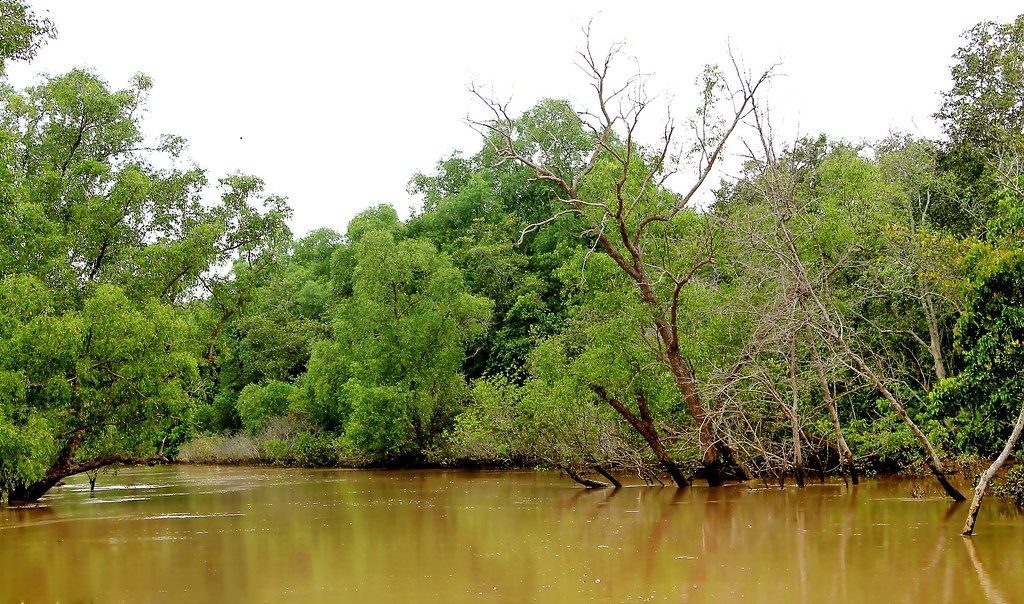Kendrapara: With the IMD indicating that a severe cyclonic storm will cross the Odisha coast near Bhitarkanika National Park, locals Tuesday exuded optimism that the rich mangrove forest cover would become a saviour for them once more.
The Park had withstood the onslaught of several cyclones in the past including the 1999 October Super Cyclone.
“We are quite hopeful that the well-protected mangrove cover here will ensure the safety of humans, flora and fauna as these species are gifted with capacity to withstand high wind velocity,” Divisional Forest Officer, Mangrove (wildlife) Forest Division, Sudarshan Gopinath Yadav said.
According to the Met office, a depression over the east-central Bay of Bengal is likely to intensify into a severe cyclonic storm and cross the Odisha-West Bengal coasts in the early hours of October 25 with a wind speed of 100-110 kmph, gusting to 120 kmph.
“We are a bit scared. Still, we are hopeful that the mangrove may save us again. The coastal woodland has the capacity to withstand the wind velocity up to 200 kilometres per hour,” said Pradip Das, a resident of Dangamal village lying close to the national park.
Though there are no definite signs of a cyclone striking the region, the people here hope that the forest cover will protect them with minimal damage as had been the case in the past.
“We pray that the forest withstands the onslaught this time also,” said Kamalakanta Nayak of Talchua village.
The lush green luxuriant mangrove cover often acts as a protective barrier against cyclones and tidal surges. It is because of the mangroves that the coastal hamlets lying on the fringes of the national park could not be impacted by cyclones in the past.
In the 1999 Super Cyclone, the area was saved as the trees bore the onslaught of gusty wind, officials said.
Mangrove trees with their intricate root system stabilise the coastline, reducing erosion from storm surges, currents, waves, and tides, said the DFO.
The flora and fauna of the park were unharmed in the recent Amphan cyclone. The villages on the close periphery of the national park were also saved as the mangrove cover acted as a buffer zone in protecting the human settlements, Yadav added.
Bhitarkanika is one of the richest storehouses of mangrove genes. Researchers have come across 11 of the 70 mangrove species, which were at elevated threat of extinction in the world, in Bhitarkanika.
Odisha is endowed with a reserve of a mangrove forest area of 231 square kilometres with a major chunk lying in Bhitarkanika. It stands second only to Sundarbans in West Bengal.
Besides Bhitarkanika in Kendrapara, the districts of Balasore, Bhadrak, Jagatsinghpur and Puri are also home to mangroves, otherwise known as coastal woodland.
While 82 square km area in Bhitarkanika is densely mangrove-infested, 95 square km area has moderate mangrove forest.
The coastal patches spread across 672 square km were declared the Bhitarkanika Wildlife Sanctuary in 1975. The core area of the sanctuary, with an area of 145 km, got the National Park tag in September 1998.
The Park is famous for its lush-green mangroves, migrating birds and turtles, estuarine crocodiles and countless creeks.
The rich biodiversity of Bhitarkanika serves as a sanctuary for leopard, wild boar, jungle cat, fishing cat, hyena, sambar, striped palm squirrel, gangetic dolphin while reptiles found comprise turtles including Olive Ridley sea turtle, crocodile, lizard, water monitors, python, and king cobra. Around 166 species of birds have been spotted in the park.
PTI
